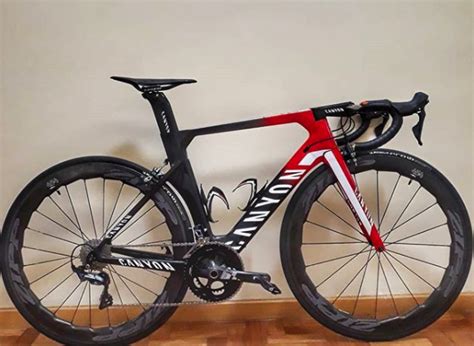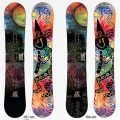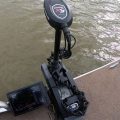How to Spot Fake Canyon Bikes: A Comprehensive Guide
Canyon Bicycles is a popular choice among cyclists, renowned for their high-quality bikes and direct-to-consumer sales model. Unfortunately, their popularity has attracted scammers, leading to an increase in counterfeit Canyon bikes. Recognizing a fake Canyon bike can be tricky, but by being aware of key indicators, you can safeguard yourself from purchasing a substandard imitation. This guide will equip you with the necessary knowledge to distinguish genuine Canyon bikes from their counterfeit counterparts.
What are the Common Signs of a Fake Canyon Bike?
Identifying a fake Canyon bike requires a keen eye for detail and a thorough inspection. Here are some common signs that can help you spot a counterfeit:
- Misspelled or Incorrect Branding: One of the most obvious indicators of a fake is misspellings, incorrect logos, or inconsistent branding on the frame, components, and accessories. Counterfeiters often make mistakes with fonts, logos, or even the Canyon name itself.
- Poorly Executed Paint Job: Genuine Canyon bikes have a smooth and consistent paint finish. Counterfeits may exhibit uneven paint application, color inconsistencies, or visible imperfections. The paint quality and finish on a fake Canyon bike may look cheap and lack the refined aesthetic of the originals.
- Subpar Components: Counterfeit Canyon bikes often use low-quality components to cut costs. Look for inferior components, such as budget-grade shifters, brakes, or wheels. The materials and construction of these components may be inferior to the genuine parts used on Canyon bikes.
- Unusual Serial Number: Every Canyon bike has a unique serial number, usually found on the bottom bracket shell or the chainstay. Counterfeiters may use incorrect or inconsistent serial numbers. Check the serial number format and verify it against Canyon’s database.
- Missing or Incorrect Documentation: Legitimate Canyon bikes come with documentation, including a warranty card, user manual, and proof of purchase. The absence or inconsistency of these documents is a red flag.
- Unrealistic Pricing: If the price seems too good to be true, it probably is. Be cautious of sellers offering substantial discounts or prices far below the market value for a genuine Canyon bike.
While these signs can help you identify a counterfeit Canyon bike, it’s essential to be aware that counterfeiters are becoming more sophisticated in their replication techniques.
How Can I Verify a Canyon Bike’s Authenticity?
To ensure you’re purchasing a genuine Canyon bike, take these steps:
- Purchase from Authorized Retailers: The most reliable way to avoid counterfeit Canyon bikes is to purchase them from authorized retailers. Canyon’s official website lists authorized dealers in your region. By purchasing through these authorized channels, you can rest assured that you’re getting a genuine product.
- Check the Canyon Website: If you’re buying a used Canyon bike, visit the Canyon website and enter the serial number into their online verification tool. This tool can confirm the bike’s authenticity and provide information about the model and specifications.
- Contact Canyon Customer Support: If you have doubts or concerns about the authenticity of a Canyon bike, contact Canyon customer support directly. They can provide guidance and assist with verification processes.
By following these steps, you can increase your chances of acquiring a legitimate Canyon bike.
How Can I Tell the Difference Between Canyon Frames?
Canyon produces a wide range of bike models, each with its unique frame design and specifications. Understanding the differences between Canyon frames can be helpful when identifying a genuine bike and choosing the right model for your needs. Here’s a breakdown of Canyon’s frame types:
- Aluminum Frames: Canyon’s aluminum frames are known for their affordability, durability, and responsiveness. They offer a good balance of performance and value, making them ideal for entry-level riders and those on a budget.
- Carbon Frames: Carbon frames are lightweight, stiff, and absorb vibrations well, making them popular among experienced cyclists and those seeking high-performance bikes. Canyon’s carbon frames are known for their advanced technologies and exceptional ride quality.
- Gravel Frames: Canyon’s gravel frames are designed for off-road adventures. These frames are typically made of aluminum or carbon and feature a more relaxed geometry, wider tires, and clearance for mudguards.
- Road Frames: Canyon’s road frames are designed for speed and efficiency. They feature a race-oriented geometry, aerodynamic tubing, and a focus on stiffness and weight savings.
By understanding the differences between Canyon’s frame types, you can select the right model for your riding style and preferences.
What are the Common Differences Between Canyon Models?
Canyon’s bike models are categorized based on their intended use and target audience. Understanding the common differences between Canyon models can help you choose the right bike for your needs. Here are some of the key distinctions:
- Endurace: The Endurace models are designed for endurance riding, with a more relaxed geometry, a focus on comfort, and features like wider tires and clearance for mudguards.
- Ultimate: The Ultimate models are high-performance road bikes, optimized for speed and efficiency. They feature a race-oriented geometry, aerodynamic tubing, and a focus on stiffness and weight savings.
- Aeroad: The Aeroad models are designed for maximum aerodynamic performance. They feature a sleek, streamlined design, and technologies that minimize drag and increase speed.
- Spectral: The Spectral models are full-suspension mountain bikes, designed for aggressive trail riding. They feature a balanced geometry, long travel suspension, and robust components.
- Neuron: The Neuron models are trail bikes, offering a versatile blend of performance and comfort. They feature a capable suspension system, a wide range of travel options, and a geometry suitable for both climbing and descending.
These are just a few examples of the various Canyon models available. It’s essential to research and understand the specific features and benefits of each model before making a purchase.
Are Canyon Bikes Worth the Price?
Canyon bikes are known for their quality, performance, and affordability. Whether or not they are worth the price depends on your individual needs and budget. Here are some factors to consider:
- Quality Components: Canyon bikes typically use high-quality components from reputable brands. These components offer durability, performance, and reliability.
- Advanced Technologies: Canyon integrates advanced technologies into their bikes, such as lightweight frames, aerodynamic designs, and efficient drivetrains. These technologies contribute to their bikes’ performance and ride quality.
- Direct-to-Consumer Sales Model: Canyon’s direct-to-consumer sales model eliminates the markups associated with traditional retail channels, making their bikes more affordable than comparable models from other brands.
- Value for Money: Overall, Canyon bikes offer excellent value for money. They provide high-quality performance and features at competitive prices.
If you’re looking for a high-quality bike that offers excellent value, Canyon bikes are a solid choice. However, it’s essential to assess your needs and budget before making a decision.
Where Can I Find Canyon Bikes?
Canyon bikes can be purchased through authorized retailers, both online and in brick-and-mortar stores. The Canyon website provides a list of authorized dealers in your region. You can also find Canyon bikes on online marketplaces, such as eBay and Craigslist, but be cautious of counterfeit bikes when buying from these sources. To ensure you’re buying a genuine Canyon bike, it’s always best to purchase from authorized retailers or directly from Canyon’s website.
How to Care for a Canyon Bike
Proper care and maintenance are crucial for extending the lifespan and performance of your Canyon bike. Here are some tips:
- Regular Cleaning: Clean your bike regularly with a specialized bike cleaning solution and a soft brush. This helps remove dirt, grime, and debris, preventing corrosion and premature wear.
- Lubrication: Lubricate your bike’s drivetrain, chain, and cables periodically. This reduces friction and ensures smooth shifting and braking.
- Check Tire Pressure: Ensure your tires are inflated to the recommended pressure. This optimizes performance, comfort, and safety.
- Inspect Components: Regularly inspect your bike’s components for signs of wear and tear. Replace worn-out or damaged components as needed.
- Professional Maintenance: Schedule regular professional maintenance checks and tune-ups to ensure your bike is functioning optimally.
By following these tips, you can keep your Canyon bike running smoothly and extend its lifespan.
What to Do if You Suspect a Canyon Bike is Fake
If you suspect a Canyon bike is fake, it’s essential to exercise caution. Avoid making any purchases until you can verify the bike’s authenticity. Here are some steps you can take:
- Contact the Seller: Ask the seller for more information, such as the bike’s serial number, proof of purchase, or a detailed description of its features.
- Research the Seller: Check the seller’s online reputation and reviews. Look for any red flags or complaints about counterfeit products.
- Compare Prices: Compare the seller’s price with the market value of a genuine Canyon bike. Unrealistic discounts or prices that are too low should raise suspicion.
- Verify the Serial Number: If possible, use Canyon’s online verification tool to check the bike’s serial number.
- Seek Professional Advice: Consult with a reputable bike shop or a professional mechanic for their opinion on the bike’s authenticity.
If you have any doubts about the authenticity of a Canyon bike, it’s better to err on the side of caution and avoid making a purchase.
What are the Consequences of Buying a Fake Canyon Bike?
Purchasing a counterfeit Canyon bike can have several negative consequences:
- Poor Quality and Performance: Fake Canyon bikes are often made with low-quality materials and components. This can result in poor performance, unreliable shifting and braking, and a lack of durability.
- Safety Concerns: Counterfeit bikes may not meet safety standards, putting you at risk of accidents or injuries. The components and materials used in counterfeit bikes may be substandard and fail under stress or load.
- Financial Loss: You’ve wasted money on a substandard bike. You can’t expect the same performance, durability, and resale value from a counterfeit as you would from a genuine Canyon bike.
- Legal Issues: Purchasing a counterfeit product can be illegal in some jurisdictions. You might face fines, penalties, or even legal action.
To avoid these consequences, it’s essential to purchase Canyon bikes from authorized retailers or directly from Canyon’s website. By taking precautions and verifying the authenticity of any Canyon bike you’re considering, you can protect yourself from financial loss and safety risks.
Table Summarizing Information
| Sign | Description |
|---|---|
| Misspelled or Incorrect Branding | Look for misspellings, incorrect logos, or inconsistent branding on the frame, components, and accessories. |
| Poorly Executed Paint Job | Genuine Canyon bikes have a smooth and consistent paint finish. Counterfeits may exhibit uneven paint application, color inconsistencies, or visible imperfections. |
| Subpar Components | Counterfeit Canyon bikes often use low-quality components to cut costs. Look for inferior components, such as budget-grade shifters, brakes, or wheels. |
| Unusual Serial Number | Every Canyon bike has a unique serial number, usually found on the bottom bracket shell or the chainstay. Counterfeiters may use incorrect or inconsistent serial numbers. |
| Missing or Incorrect Documentation | Legitimate Canyon bikes come with documentation, including a warranty card, user manual, and proof of purchase. The absence or inconsistency of these documents is a red flag. |
| Unrealistic Pricing | If the price seems too good to be true, it probably is. Be cautious of sellers offering substantial discounts or prices far below the market value for a genuine Canyon bike. |
Frequently Asked Questions (FAQ)
Here are some commonly asked questions about spotting fake Canyon bikes:
How do I check if a Canyon bike is genuine?
The best way to check the authenticity of a Canyon bike is to use Canyon’s online verification tool. You can find this tool on the Canyon website. Simply enter the bike’s serial number, and the tool will tell you if the bike is genuine. You can also contact Canyon customer support for assistance.
Are all Canyon bikes made in Germany?
While Canyon bikes are designed in Germany, some of their bikes are manufactured in other countries, such as Taiwan and China. However, the quality and standards of their bikes remain consistent regardless of where they are produced.
Can I buy a Canyon bike from a third-party seller?
Yes, you can buy a Canyon bike from a third-party seller, but exercise caution. Be sure to check the seller’s reputation and reviews before making a purchase. It’s also advisable to verify the bike’s authenticity using Canyon’s online verification tool.
How long is the warranty on a Canyon bike?
Canyon bikes come with a two-year warranty that covers manufacturing defects. You can find more details about their warranty policy on their website.
What is the difference between a Canyon Aeroad and an Ultimate?
The Canyon Aeroad is designed for maximum aerodynamic performance, while the Ultimate is a high-performance road bike optimized for speed and efficiency. The Aeroad features a more streamlined design and technologies that minimize drag, while the Ultimate prioritizes stiffness and weight savings.
What is the best way to clean a Canyon bike?
The best way to clean a Canyon bike is to use a specialized bike cleaning solution and a soft brush. Avoid using harsh chemicals or abrasive cleaners, as they can damage the bike’s finish.
How often should I service my Canyon bike?
It’s recommended to service your Canyon bike at least once a year or more frequently if you ride regularly. A professional mechanic can inspect your bike for signs of wear and tear and make any necessary adjustments or repairs.



